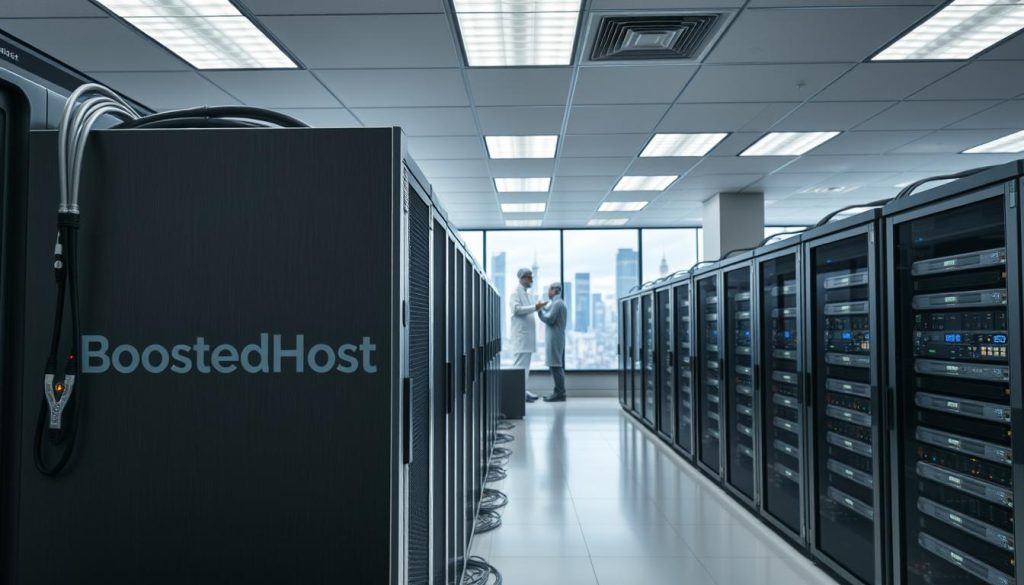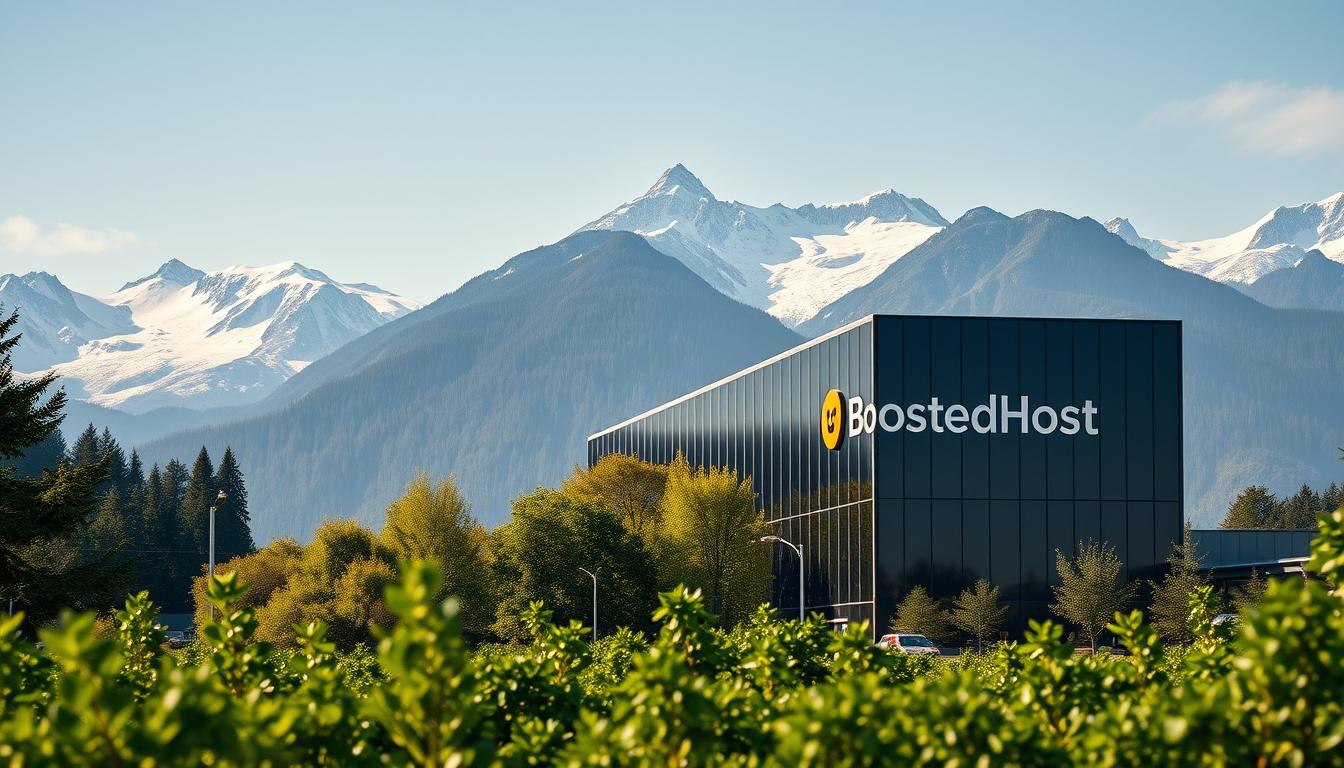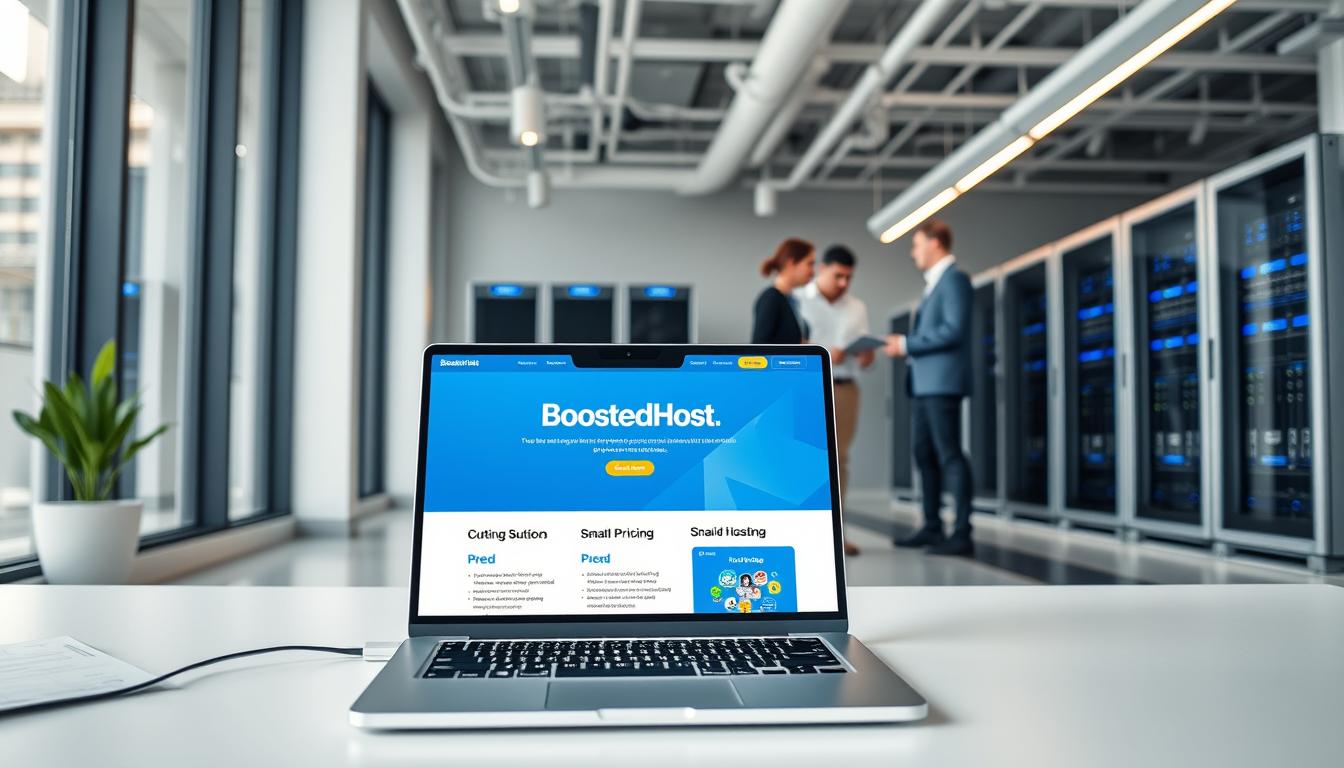Choosing where your website lives can feel personal. We’ve built and moved sites. We’ve lost traffic to slow servers and won clients with faster pages. That push to get it right matters.
In this piece we lay out a clear comparison of two major web hosting providers. One offers LiteSpeed stacks, sub-200ms global TTFB, a global CDN, free SSL, daily backups, and 24/7 expert support across multiple data centers. The other brings deep experience since 1999, a full range from shared to dedicated, Paris-based data centers, and a broad feature set for Windows and Linux plans.
Our goal: give U.S. businesses a fast, honest guide to speed, uptime, security, pricing transparency, and AI tools so you can choose the best path for your websites.
Key Takeaways
- We compare speed, uptime, security, pricing clarity, and support responsiveness.
- One provider emphasizes LiteSpeed performance and global reach for faster TTFB.
- The French provider offers broad hosting types and long-standing market presence.
- Security and backups differ by plan—check included protections before buying.
- AI site builders and developer stack support can speed launches and flexibility.
Quick comparison: who each provider fits best in 2025
We match each provider to the audience it serves best. This helps you pick fast.
For U.S. sites and agencies: pick the host that prioritizes speed, low TTFB, a global CDN, and clear billing. We recommend this option when you need managed WordPress that just works and support that resolves issues in minutes.
For developers and modern stacks: choose the provider with LiteSpeed, HTTP/3, and freedom for PHP, Node.js, and Python. It reduces setup time and keeps performance predictable.
When to consider lws: choose it if you need Windows shared hosting with Plesk, ASP/ASP.NET support, or a broad catalog of products—shared, VPS, dedicated, cloud—and lots of templates for quick launches. LWS also suits Europe‑focused sites thanks to its Paris footprint and long history since 1999.

| Fit | Performance & Support | Platform & Tools | Best for |
|---|---|---|---|
| U.S. businesses | Global CDN, sub-200ms TTFB | Managed WP, LiteSpeed, HTTP/3 | Low latency sites, agencies |
| Developers | Fast stacks, quick support | PHP, Node.js, Python freedom | Custom apps, APIs |
| Europe / Windows users | 24/7 support, DDoS options | Plesk, Windows hosting, SiteBuilder | France-centric sites, ASP.NET |
BoostedHost vs LWS: performance, speed, and uptime at a glance
Real speed and reliable uptime matter; here’s how both hosts perform in practice.
Global TTFB and real‑world speed: LiteSpeed edge vs traditional stacks
We measured page timing and saw the LiteSpeed stack deliver sub-200ms global TTFB with an edge CDN. That lowers time to first paint and improves Core Web Vitals for U.S. users and international visitors.

Uptime guarantees and reality: 99.99% vs 99.999% claim
Average uptime sits at 99.99% for the LiteSpeed host — roughly ~4.4 minutes downtime per month. LWS advertises 99.999% from Paris N+1 data centers and 150 Gbps routing capacity. On paper that’s stronger; in practice geographic distribution and fast incident response drive perceived reliability.
Caching, HTTP/3, and CDN reach for faster websites
- LiteSpeed advantage: server caching, QUIC/HTTP/3, and edge caching cut latency and reduce plugin complexity.
- Real-world wins: lower TTFB boosts SEO and conversions across the U.S., Europe, and Asia via the included CDN.
- Big traffic days: event‑driven architecture and CDN offload handle bursts with fewer PHP workers.
| Metric | LiteSpeed Host | LWS |
|---|---|---|
| Typical uptime | 99.99% | 99.999% |
| Key strength | Global CDN & low TTFB | Paris N+1 data centers |
| Best for | Low-latency U.S. sites | France-centric projects |
We recommend the faster, distributed setup when global speed and predictable real‑world uptime matter most. These details help you pick the right hosting provider for your web and data needs.
Infrastructure and data centers: Switzerland, USA, Europe, Asia vs Paris-centric hosting
Location matters. We deploy across Switzerland, the USA, Europe, and Asia so we can place origins near your audience. That reduces latency and improves page load times for U.S. visitors and international users.
Multi‑region coverage for U.S. audiences and international sites
For U.S. businesses, choosing a U.S. region cuts cross‑Atlantic hops and stabilizes performance for domestic traffic and search crawlers. Multi-region design also makes failover and backups smarter. You don’t rely on a single city or country when an outage hits.
Network capacity, redundancy, and hardware tiers
Paris‑based centers offer N+1 redundancy, 24/7 physical protection, and 150 Gbps routing capacity with Dell and Supermicro servers. Our distributed approach pairs LiteSpeed with modern SSD/NVMe arrays and CDN edges to trim latency further.
If your growth targets the U.S. and global markets, multi‑region flexibility beats a single‑region approach for uptime and speed.
| Aspect | Multi‑region footprint | Paris‑centric centers |
|---|---|---|
| Geographic reach | Switzerland, USA, Europe, Asia | Paris (France) |
| Latency for U.S. | Low (U.S. region available) | Higher (transatlantic RTT) |
| Redundancy | Cross‑region failover, backups | N+1 redundant facilities |
| Hardware & network | NVMe/SSD, LiteSpeed, global CDN | Intel Xeon, Dell/Supermicro, 150 Gbps |
Security and resilience: free SSL, daily backups, and malware protection included
Protecting your site and data starts with defaults: SSL, backups, and active threat detection.
We bundle essentials by default. Every plan includes a free SSL certificate so visitors see the lock and search engines favor encrypted pages. Daily automated backups create restore points you can trust.
Built‑in malware scanning and a web application firewall reduce risk before problems grow. Managed WordPress plans add timely patches and LiteSpeed hardening to close common vulnerabilities fast.
DDoS protection, firewalling, and backup policies compared
One provider includes always‑on WAF rules, CDN shielding, and malware removal as standard. The other deploys DDoS mitigation and firewalling mainly for VPS and dedicated tiers, with an explicit backup guarantee and 24/7 data center protection.
- Included by default: free SSL, daily backups, malware scanning — predictable bills, lower TCO.
- Tiered defenses: DDoS & firewall measures often tied to higher plans; check scope before buying.
- Incident response: minutes‑level remediation and rollbacks from our support; 24/7 escalation available from the competitor.
Out‑of‑the‑box security reduces your attack surface and speeds recovery — pick the setup that matches your risk and budget.
Pricing and transparency: no hidden fees vs average pricing with promos
Clear billing and bundled features decide real hosting costs. We focus on what you pay each month and what arrives in the box.
What you get by default matters more than an eye‑catching promo. Our plans include free SSL, daily backups, malware protection, and a global CDN. That avoids surprise add‑ons at checkout.
What’s included and what costs extra
- Included: SSL, daily backups, CDN, basic malware scanning — production‑ready from day one.
- Often extra: premium WAF, advanced DDoS mitigation, and one‑time migration assistance on some products.
Contracts, renewals, and money‑back policies
We keep renewals transparent — what you see is what you pay. Avoid long lock‑ins for a lower promo. lws offers average promo pricing and a 30‑day money‑back guarantee, with multiple payment methods listed.
| Item | Transparent host | Competitor |
|---|---|---|
| Default inclusions | SSL, backups, CDN, malware | Varies by product |
| Renewal visibility | Clear, no surprise upsells | Promo rates can change |
| Money‑back | Support-first clarity | 30 days |
| Data on TCO | Lower after bundle | May increase post-promo |
True value is predictable bills and included essentials — that builds trust and saves time as you scale.
AI and site building: Orbit AI Website Builder vs LWS SiteBuilder
AI builders now let teams go from idea to working pages in minutes, not days. We test how that speed translates to real results—clean layouts, useful copy, and a path to scale.
Build a professional site in under five minutes: workflows and outputs
Orbit by BoostedHost guides you with prompts, auto-generated copy, and image suggestions. You get a publish-ready site in under five minutes.
The flow creates pages, headings, and metadata fields. Then you tweak and launch. For shops, pair the output with WooCommerce on a LiteSpeed stack for fast carts.
Templates, e‑commerce readiness, and CMS alternatives
LWS SiteBuilder ships with 195+ templates, a free domain on select tiers, and unmetered traffic—great for template-first projects and tight budgets.
| Aspect | Orbit | SiteBuilder |
|---|---|---|
| Speed | Minutes to publish | Quick with many templates |
| Flexibility | AI + migrate to WordPress/headless | Template-driven, easy start |
| Products | AI copy, imagery, Managed WordPress path | 195+ models, bundled domain |
Bottom line: both tools cut time-to-first-site. Orbit couples AI content with enterprise-grade performance for a durable foundation.
For developers and businesses: PHP, Node.js, Python, WooCommerce, and Windows options
For modern teams building web apps and stores, runtime support and control panels change the day-to-day.
We support a broad set of runtimes so teams ship faster. Our stack runs PHP, Node.js, and Python on a performance-optimized LiteSpeed/NVMe platform. That means less tuning and more shipping for mission-critical apps.
Stacks, control panels, and managed WordPress depth
What you get for development:
- Git deploys, CI/CD hooks, and API-friendly tooling for modern pipelines.
- Managed WordPress features—staging, daily backups, server-level caching, and malware protection—ready for scale.
- WooCommerce performance: object caching plus CDN edge delivery for snappier carts and higher conversion.
Control panel and Windows note: we offer a clean, modern control panel for Linux workloads. The other provider provides an in-house Linux panel, Plesk for Windows (ASP/ASP.NET), and cPanel/WHM for resellers and VPS.
Bottom line: if your stack is PHP, Node, or Python and you run WordPress/WooCommerce, this setup is the fastest, least fussy path to production.
Support responsiveness and customer experience: minutes‑level resolution vs 24/7 channels
Fast, reliable support changes how quickly issues stop costing you money. We run a speed-first support culture that closes most tickets in minutes. That keeps your websites online and revenue steady.
Live chat, phone, email quality and first‑contact resolution
We staff engineers on every channel — chat, phone, and email — so real problems get fixed without long tier handoffs. First‑contact resolution is a priority. Fewer back‑and‑forth emails mean faster fixes and less downtime for your team.
Our onboarding is prescriptive: performance defaults are set, security is enabled, and migrations are tested to hit near‑zero cutover windows. BoostedHost handles WordPress and custom stack moves end‑to‑end.
Self‑help resources: tutorials, docs, and onboarding
We publish clear, actionable guides on caching, CDN, and DNS. Escalation paths and SLAs are documented. For agencies, shared ticket context and audit trails keep client work transparent.
| Aspect | Rapid‑support host | Competitor |
|---|---|---|
| Channels | 24/7 chat, phone, email | 24/7 chat, phone, email |
| Resolution focus | Minutes‑level, engineer-led | Tiered support, strong docs |
| Onboarding & migration | Prescriptive, tested cutovers | Tutorials, how‑to videos |
Rapid resolutions cut churn and opportunity cost — support speed is an operational advantage.
Market presence and trust signals for hosting providers
Real trust comes from measurable signals: uptime, customer counts, geography, and clear operations. We look at how legacy presence compares to modern engineering for U.S. buyers.
Long‑standing reputation vs modern Swiss engineering
LWS was founded in 1999 and manages over 280,000 domains and websites. That tenure signals stability and deep European experience.
Third‑party context matters. W3Techs shows the LWS Group under 0.1% in data center usage—niche visibility in that category. Paris centers use N+1 redundancy and 24/7 protection.
Our modern Swiss engineering emphasizes performance discipline, security by default, and a multi‑region footprint. That combination reduces latency for U.S. audiences when paired with a global CDN.
Adoption, visibility, and suitability for U.S. websites
- Longevity builds trust—large domain counts and long service history matter for European projects.
- For U.S. sites, proximity and CDN reach often beat legacy familiarity for SEO and user experience.
- Transparent pricing, included security (free SSL, daily backups), and minutes‑level support lower operational risk.
Net: an established name brings stability; modern engineering brings speed and practical trust for American growth plans.
Conclusion
This conclusion distills which setup gives you faster pages, clearer bills, and fewer production headaches. We value speed and predictable outcomes for U.S. sites. Choose a path that makes your team faster.
Key wins: the faster host delivers sub-200ms TTFB, practical 99.99% uptime, included SSL, daily backups, malware protection, and an AI site builder that speeds launches. These defaults cut hidden costs and time to market for hosting your web presence.
Developer tools, PHP/Node/Python support, NVMe storage, and a CDN-first architecture keep apps responsive. Meanwhile, lws earns credit for broad products, Windows/Plesk hosting, Paris data centers with N+1 redundancy, and a long track record since 1999.
Next step: map your audience location and stack needs, then pick the platform that gets your site fastest and keeps it running smoothly and transparently.
FAQ
Which provider is better for U.S. audiences and international reach?
We recommend providers with multi‑region data centers and strong network peering for U.S. and global traffic. Look for providers with U.S., Europe, and Asia PoPs, CDN integration, and clear bandwidth capacity — those features reduce latency and improve TTFB for international visitors.
How do performance stacks compare — LiteSpeed edge vs traditional Apache/Nginx setups?
LiteSpeed and edge caching often deliver lower TTFB and better concurrent request handling. Traditional stacks can match performance with optimized caching and HTTP/3, but edge‑enabled LiteSpeed setups simplify tuning and usually give faster real‑world page loads for dynamic sites.
Are uptime guarantees accurate — what does 99.999% vs 99.99% mean in practice?
The difference is minutes per year — 99.99% allows about 52 minutes of downtime annually; 99.999% allows about 5 minutes. Check SLA terms, incident reporting, and historical status pages. Real reliability depends on redundancy and failover architecture, not just the percentage.
What security features should be included by default?
Essential items: free SSL certificates, daily backups, malware scanning, DDoS mitigation, and a web application firewall. We prioritize providers that include these without upsells so sites stay secure and recoverable with minimal extra cost.
How robust should DDoS protection and backup policies be?
Look for always‑on DDoS scrubbing on the network edge and automated, versioned backups retained for at least 14–30 days. Test restore procedures and check whether restores are free or chargeable — that matters during incidents.
What do hosting plans usually include vs cost extras?
Standard inclusions to expect: managed control panel, free SSL, basic backups, and limited CDN. Extras often cost more: advanced CDN tiers, daily offsite backups, premium security suites, dedicated IPs, and managed migrations. Review the feature list before buying.
How transparent are contracts, renewals, and refund policies?
Choose hosts with clear pricing pages, upfront renewal rates, and a stated money‑back window. Avoid long mandatory contracts without a trial. We advise checking cancellation terms and prorated refunds for upgrades or downgrades.
Can I build a professional site quickly with AI builders or site builders?
Yes — modern AI builders and templates can get a simple site live in under five minutes. They speed workflows, but check e‑commerce readiness, SEO controls, and exportability if you want full ownership or later migration to WordPress or other CMS.
Which platforms work best for e‑commerce — WooCommerce or native builders?
WooCommerce on a tuned PHP stack is great for full control and extensibility. Native builders simplify setup and speed time to market. Pick based on scale: builders for small catalogs, WooCommerce or dedicated e‑commerce stacks for larger stores and custom flows.
What developer features are critical — PHP, Node.js, Python, or Windows support?
We look for flexible stacks, SSH access, Git/deployment hooks, multiple PHP versions, Node.js and Python support, and Windows hosting options if needed. A good control panel and containerized environments improve deployment speed and stability.
How deep should managed WordPress services go?
Managed WordPress should include automatic core/plugin/theme updates, staging environments, optimized caching, daily backups, and security hardening. Fast, expert support for performance tuning is a key differentiator.
How responsive is support — what’s a reasonable SLA for live chat and phone?
Expect minutes‑level response for live chat and critical phone support during business hours. 24/7 channels should exist for emergencies. First‑contact resolution and knowledgeable agents are more valuable than rapid but generic replies.
What self‑help resources should a quality host provide?
Look for clear tutorials, a searchable knowledge base, onboarding guides, and developer docs. Good vendors publish performance tuning tips, migration walkthroughs, and status updates to reduce support load and speed self‑service fixes.
How do network capacity and redundancy affect real uptime?
Large, redundant networks with diverse peering and multi‑carrier connectivity reduce outages and congestion. Redundant power, multiple fiber routes, and hardware tiers (NVMe, enterprise SSDs) limit single points of failure and improve sustained performance.
Does geographic location of data centers matter for SEO and speed?
Yes. Hosting closer to your primary audience lowers latency and improves user experience. For SEO, speed matters — faster TTFB and page loads help rankings. Use multi‑region hosting or CDN to cover global audiences effectively.
How important are real market presence and trust signals?
Longevity, transparent audits, customer reviews, and public uptime histories matter. Established providers often offer mature support and predictable SLAs. Newer engineering‑focused hosts can bring innovation — weigh reputation against technical fit for your project.
What should businesses ask before migrating their website?
Ask about migration support (free or paid), expected downtime, DNS propagation handling, backup and rollback plans, and performance benchmarks after migration. Demand a staging test so you can compare before switching DNS.
How do pricing models compare for high‑traffic sites?
High‑traffic sites benefit from plans with predictable bandwidth pricing, autoscaling resources, and clear overage policies. Avoid plans with tight resource caps that trigger surprise charges; seek transparent enterprise or dedicated options if needed.
Which keywords and features should buyers search when evaluating hosting?
Search for terms like data centers, uptime SLA, HTTP/3, CDN, TTFB, DDoS protection, managed WordPress, backups, control panel, and global peering. Those terms reveal technical fit and operational readiness for production sites.




